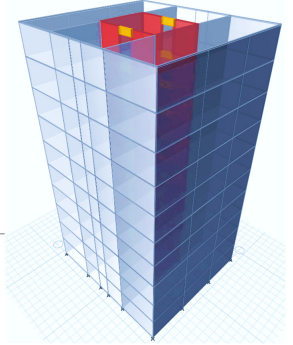Amgad Mahrous, Belal AbdelRahman, Khaled Galal, Najib Bouaanani, and Pierre Léger
i PhD Graduate, Concordia University, Montreal, Canada, amgad.mahrous@mail.concordia.ca
ii Postdoctoral Fellow, Concordia University, Montreal, Canada, belal.abdelrahman@concordia.ca
iii Professor, Concordia University, Montreal, Canada, khaled.galal@concordia.ca
iv Professor, École Polytechnique de Montréal, Montreal, Canada, najib.bouaanani@polymtl.ca
v Professor, École Polytechnique de Montréal, Montreal, Canada, pierre.leger@polymtl.ca
ABSTRACT
Reinforced masonry (RM) structures have recently gained popularity as they are considered a cost-effective and fast construction technique. However, the seismic design of mid- to high-rise RM structures is still a challenge because it requires a reliable seismic force-resisting system (SFRS) capable of providing the required ductility and capacity. Reinforced concrete (RC) core walls are commonly used as the primary lateral force-resisting system in modern building construction as it accommodates the elevators and staircases. Therefore, this study examines the adequacy of using reinforced masonry core walls with boundary elements (RMCW+BEs) as a potential SFRS alternative to rectangular reinforced masonry shear walls (RMSWs) with and without boundary elements, given their enhanced structural and architectural characteristics in typical RM buildings. Furthermore, this study introduces a new modeling technique utilizing the applied element method (AEM) implemented in the Extreme Loading for Structures software (ELS), that can capture the seismic performance of RMSWs having different cross-sectional configurations and design parameters. Moreover, the developed models are used to evaluate the seismic performance of RM buildings located in North American moderate seismic zones that employ the RMCW+BEs as the main SFRS. The performance of the proposed system is evaluated using nonlinear time history analysis (NLTHA) utilizing typical ground motion records for North America. The system ductility and overstrength are quantified using nonlinear pseudo-static pushover following the FEMA P695 procedure. The results showed that utilizing the RMCW+BEs as the main SFRS can adequately control the seismic demand results from typical North American ground motions. Nonetheless, the system provides the required ductility, overstrength and deformation capacity for a ductile SFRS for typical mid- and high-rise buildings. The findings of this study contribute toward implementing the RMCW+BEs as an effective SFRS for typical RM buildings in the next generation of North American design standards for masonry structures.
KEYWORDS: Core walls, Boundary elements, Nonlinear analysis, FEMA P695, Applied element method, Seismic response.
016-Mahrous.pdf



